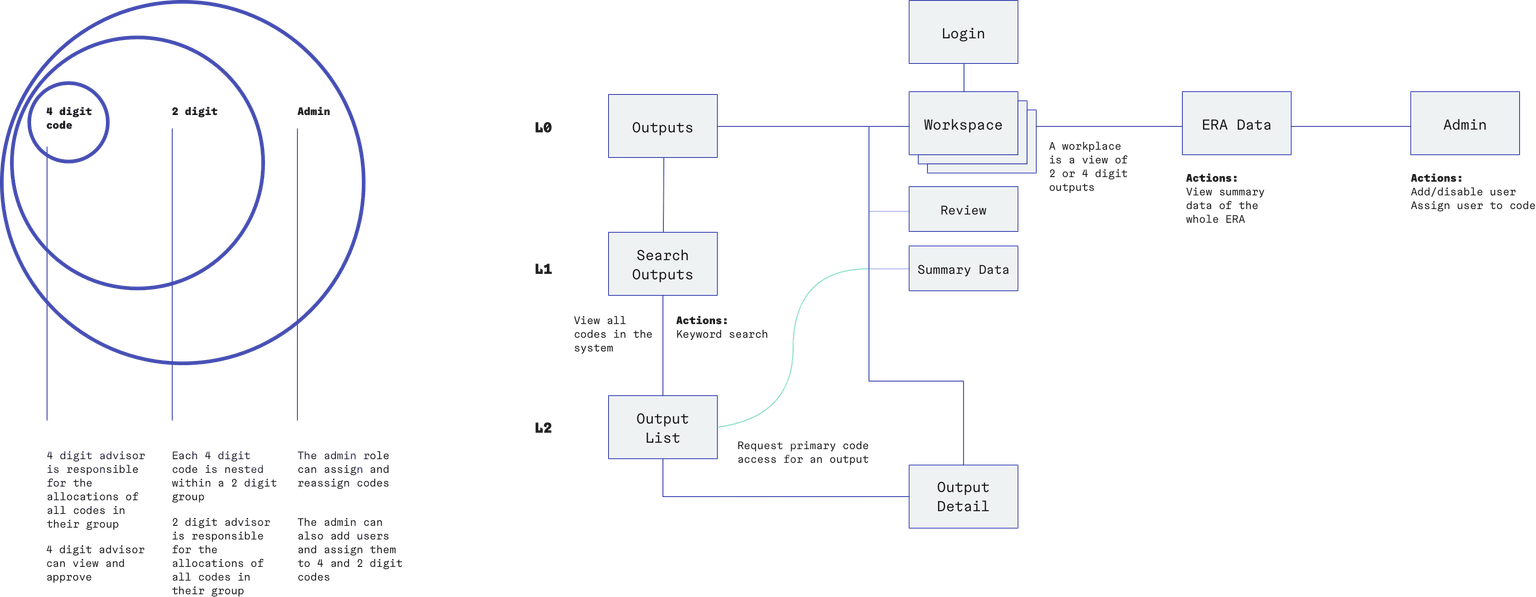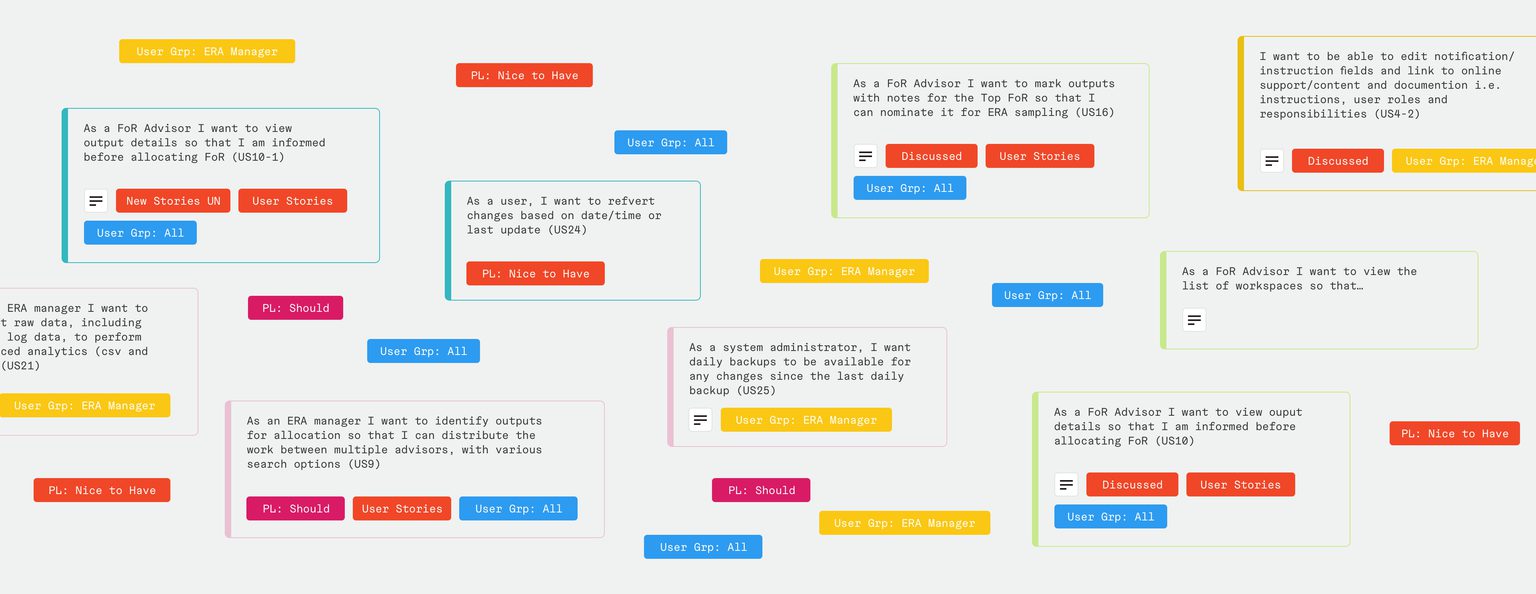A modern solution for old-school research reporting

OVERVIEW
RMIT University needed a new way to organise submissions for a national research assessment. Previously dependent on manual (and maddening) spreadsheets, the process didn’t reflect the calibre of research it was meant to represent. So RMIT worked closely with Slalom Build to design and build a web-based workflow management application that reduces complexity, improves accuracy, and makes the grade.
SCOPE
Data Engineering, Information Architecture, Experience Design, Agile Coaching, Cloud Transformation
TECHNOLOGY
AWS CloudFront, AWS Fargate, Amazon Aurora, ReactJS, PostgreSQL, Material UI Design, Amazon S3, Amazon Cognito, Okta, Lighthouse, AWS DMS
Spreadsheets spread too thin
Every three to five years, the Australian government assesses the research quality of universities across the country. Known as Excellence in Research for Australia (ERA), the process compares Australia's university research against international benchmarks. This creates incentives to improve the quality of research. An ERA score can impact an institution’s reputation, so preparing a quality submission is paramount.
Part of that preparation is assigning one or more Field of Research (FoR) codes to each research output (e.g. journal article, exhibit) submitted for ERA review. Every discipline has a unique FoR code, and this taxonomy helps ERA track active areas of research across all universities.
At RMIT, this aspect of ERA preparation was becoming a field of research unto itself. More than 70 research leaders contributed to allocating FoRs to roughly 24,000 research outputs. Manually editing each submission in epic spreadsheets that could grow to be thousands of lines deep. When a project touched multiple fields and required more than one FoR code, things got even more complicated. For example, take a civil engineering project that also involves Indigenous Studies. If only one department’s code is assigned, the other department misses an opportunity to be recognised.
RMIT leaders had a vision for a better system that empowered research managers to monitor code allocations in real time. They came to Slalom Build to make it happen.
“On the Slalom Build team, there’s a real commitment to partnering for success. The knowledge exchange really stands out.”
— Jane Holt, Executive Director, Research Strategy and Services, RMIT

Accuracy begins with ownership
The RMIT team wanted a web-based application that enabled collaborative editing across departments and improved version control. But before starting work on a solution, the Slalom Build team needed to better understand the specifics of the problem.
Our team interviewed university academic and professional staff members to distinguish all the potential users’ points of view. It became clear that the application was not just a vessel to enter and store FoR codes, but a channel in which to suggest, edit, and approve them. That made improving communication and transparency the goals.
“I’ve seen other projects delivered according to a cookie-cutter template,” says Jane Holt, Executive Director, Research Strategy and Services at RMIT. “It was refreshing to see Slalom Build’s genuine approach to understanding the challenge and shared accountability for a great outcome.”

Core to this solution was writing comprehensive user stories and developing the concept of priority ownership. This gives the research owner whose FoR code is assigned with the greatest percentile ultimate approval power for that output. Other users with certain permissions may submit requests or recommend edits, but the ERA submission doesn’t move forward without the priority owner signing off.
Once the team figured out how to effectively serve up only relevant information to over 100 users, each with distinct roles and responsibilities, it needed to make the tool feel almost effortless to use for everyone.
“You’ve got some users, who are experienced technologists doing deep algorithmic work, and others that only need to use the tool once a week,” explains Andrew Lamont, Principal, Experience Design. “Both needed to be able to use this tool.”
The Slalom and RMIT teams worked closely throughout the project, meeting in regular syncs to exchange questions and feedback on the platform’s function and design. This project went the distance from original concept to build, and along the way, both teams learned from each other. Slalom introduced RMIT to newer approaches to testing and security enabled by the cloud. RMIT brought its expertise in accessibility design.
More modern platform, less manual work
The Slalom Build and RMIT teams created a web-based, workflow management application—built from scratch—complete with live notifications, customisable user roles, and a user-friendly interface that matches the university’s branding.
Starting with a data migration using Amazon Data Migration Service (DMS), and built on the AWS cloud, the solution uses AWS Fargate to orchestrate serverless functions throughout on the backend and data storage on Amazon S3. A Front end built on React and featuring SSO capabilities from Amazon Cognito begins the impressively friendly user experience.
Reflecting on the academic community’s reactions, Holt says, “They could see how much of a difference it was going to make, and they loved how easy it was to use.”
The tool adds several convenient features on top of allocating FoR codes. With live notifications enabled, priority owners have real-time visibility of how codes are being used and who is making changes to what entries. Users with appropriate permissions can allocate up to three FoR codes for each research output (where only one was possible before). Checks are now in place to ensure percentages of ownership are accurately assigned.
Most importantly, the functionality of the app is intuitive, simple, and streamlined. It doesn’t add additional work to already-busy researchers’ plates.
“Nothing is simple with the government, right?” says Lam Truong, Senior Director, Data Engineering at Slalom Build. “To take such a complex process and distil it down to something so simple—what the team built is a work of art.”
And the huge, clunky spreadsheets are no more.
“Everyone on the Slalom Build team tried to walk in the shoes of the users to ensure it was a successful product in the end.”
— Weisi Zhao, Senior Manager, Research Reporting, RMIT University
Next Up